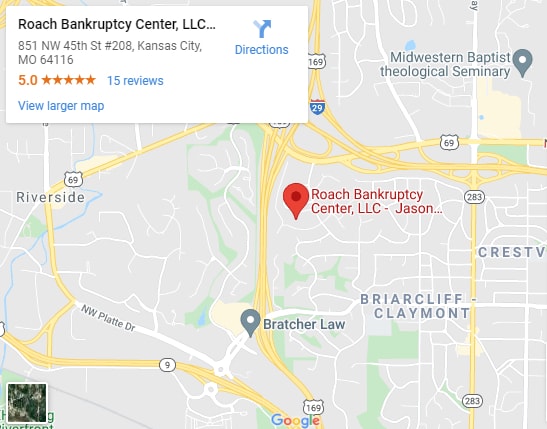Secure Your Retirement Funds in Bankruptcy
Generally, both Chapter 7 and Chapter 13 bankruptcy will help a debtor in protecting his retirement plan, with some exceptions. One of these exceptions is where people often get confused. One of the questions that our legal team receives is, “How do I protect my retirement funds in bankruptcy?”
Bankruptcy is a legal process that allows individuals or businesses who cannot pay their debts to seek relief from some or all of their debts. Bankruptcy provides a legal means for individuals and businesses to manage or eliminate their debts when they become unmanageable. Undoubtedly, it is a complex area of law that requires a deep understanding of state and federal laws.
Short Summary:
- Bankruptcy provides a legal means for individuals and businesses to manage or eliminate their debts when they become unmanageable.
- Both Chapter 7 and Chapter 13 bankruptcy generally protect retirement plans, with exceptions.
- Legal exemption shields funds in recognized retirement accounts from creditor seizure.
- Meticulous documentation of contributions, withdrawals, and transactions is essential.
- Explore debt restructuring options to preserve assets and ensure a stable financial future.
- Chapter 7 means test eligibility may be affected by withdrawals, impacting the bankruptcy process.
- Chapter 13 may increase monthly payments if funds are drawn from retirement accounts.
- Postponing withdrawals until after bankruptcy completion may be advisable.
- Large contributions close to bankruptcy filing or unusual transactions may face scrutiny.
- Despite general protection, there are limits on contributions and withdrawals.
- Asset protection trusts, state-specific laws, federal creditor protection laws, spousal rights, and joint ownership offer non-bankruptcy safeguards.
- Homestead exemptions, insurance policies, and legal advice from professionals can contribute to protecting retirement funds.
Empower your financial journey with experienced insights. Safeguard your retirement funds and navigate bankruptcy complexities with confidence!
Chapter 7 vs. Chapter 13 Bankruptcy
It is crucial to understand the difference between the two major bankruptcy chapters. In Missouri, as in other parts of the United States, individuals and businesses may file for bankruptcy under different chapters of the U.S. Bankruptcy Code. Here are the primary types of bankruptcy available in Missouri:
- Chapter 7 (Liquidation): In this type, a debtor’s nonexempt property will be sold, and their debts will be discharged. This arrangement typically works well for people who do not own a lot of property or valuable assets.
- Chapter 13 (Debt Adjustment): In Chapter 13, a person’s debts can be paid off, in whole or in part, under a plan proposed by the debtor and approved by the court. That allows you to keep your property. In exchange, you develop and stick to a repayment plan that lasts for three to five years.
Can You Lose Your Retirement Funds In Bankruptcy?
The answer is no. In almost all situations, the funds accumulated in your retirement savings account are fully protected by legal exemption. That implies creditors cannot seize or compel you to relinquish any funds residing in a recognized retirement account. The legislative revision of bankruptcy laws in 2005 extended exemptions to almost all retirement accounts that meet Employee Retirement Income Security Act (ERISA) qualifications. Those excluded from the bankruptcy estate encompass retirement accounts such as:
- 401(k)s – a retirement savings plan sponsored by an employer. It allows employees to save and invest a portion of their paycheck before taxes are taken out. Some employers match a portion of the employee’s contribution.
- 403(b)s – a retirement savings plan typically offered to employees of public schools, tax-exempt organizations, and certain ministers. Like the 401(k), contributions are made pre-tax, and earnings grow tax-deferred.
- Money purchase plans – A money purchase plan is a retirement plan where employers contribute a set percentage of an employee’s salary each year, regardless of the company’s profitability.
- Profit-sharing plans – Profit-sharing plans are retirement plans that allow employers to contribute to employees’ retirement accounts based on the company’s profits. Contributions are discretionary and can vary from year to year.
- Individual Retirement Accounts (IRAs) – IRAs are personal retirement savings accounts that allow individuals to save for retirement with tax advantages. There are different types of IRAs:
- Roth IRA: Contributions are made with after-tax dollars, but withdrawals in retirement are tax-free.
- SEP IRA (Simplified Employee Pension): Allows employers to contribute to traditional IRAs set up for employees.
- SIMPLE IRA (Savings Incentive Match Plan for Employees): A retirement plan specifically designed for small businesses. Both employers and employees can contribute to the plan.
- Defined-benefit plans – a type of retirement plan where the retirement benefit is based on a formula that considers factors like salary history and years of service. Employers bear the investment risks and obligations to provide the agreed-upon benefits to retirees.
- Keoghs – retirement plans for self-employed individuals or small business owners. They offer tax benefits similar to other retirement plans but are designed to accommodate the specific needs of self-employed individuals.
Documentation and Proper Record-Keeping
Meticulous documentation and proper record-keeping play a pivotal role. The clarity and accuracy of records are paramount in establishing the exempt status of retirement assets. Debtors must maintain detailed documentation of contributions, withdrawals, and any pertinent transactions related to their retirement accounts.
Proper documentation extends beyond the digital realm; tangible records, such as statements and receipts, also contribute to a comprehensive financial trail. Implementing robust record-keeping practices strengthens the case for exempt status and streamlines the bankruptcy process.
Strategies for Protecting Retirement Funds
Strategic planning is essential to preserving these vital assets and ensuring a stable financial future. One effective strategy is to explore debt restructuring options, providing relief without compromising your hard-earned retirement savings.
Balancing immediate financial needs while safeguarding long-term investments is crucial. By implementing these strategic approaches, individuals can navigate financial uncertainty while fortifying their retirement nest egg. For those seeking actionable advice on safeguarding retirement funds, these strategies offer a solid foundation, ensuring your financial future remains secure.
Withdrawal of Retirement Funds
Withdrawals from a retirement account are deemed as income in the context of bankruptcy. Opting for Chapter 7 may render you ineligible under the means test if you’ve taken money out. If you pass the means test and proceed with Chapter 7, the bankruptcy trustee might access these funds unless they are crucial for your basic needs.
Contrarily, if you choose Chapter 13, funds drawn from a retirement account could amplify your monthly payments within the repayment plan. That is due to their classification as disposable income that can be directed toward settling unsecured debts. Consequently, it might be advisable to postpone withdrawing money from a retirement account until after completing bankruptcy, which could be just a few months if you file under Chapter 7.
Elderly individuals contemplating the withdrawal of funds from their retirement accounts typically possess minimal alternative assets. Consequently, they might be shielded from collection attempts, as they are considered judgment-proof, indicating an absence of assets for creditors to seize. If they continue to be judgment-proof, pursuing bankruptcy might not be a viable strategy for them.
Exceptions and Limits
While retirement funds typically enjoy protection, some nuances demand attention for a comprehensive strategy. Certain circumstances may test the safeguarding of retirement funds. Large contributions close to bankruptcy filing or unusual transactions may face scrutiny. Being aware of these exceptions allows individuals to proactively address potential challenges.
- Limits on Protection: There are often limits on protection despite the general protection afforded to retirement accounts. Excessive contributions or withdrawals may be subject to restrictions. Staying within defined limits ensures that the intended protection remains intact during financial uncertainties.
- Timing Matters: Timing is crucial in bankruptcy planning. Individuals contemplating bankruptcy should be mindful of the timing of financial transactions related to retirement accounts. Understanding the permissible timeframe for contributions and withdrawals helps avoid unintended consequences.
- Ongoing Monitoring and Adaptation: Bankruptcy laws evolve, and personal financial situations change. Regularly monitoring legal updates and adapting strategies accordingly is essential. Remaining proactive ensures that retirement funds stay shielded within the prevailing laws and regulations.
Exceptions and limits underscore the need for a nuanced approach to protecting retirement funds during bankruptcy. Staying informed and adapting strategies to evolving circumstances are integral to a resilient financial plan.
Non-Bankruptcy Protections
While bankruptcy laws offer a framework for shielding assets, additional safeguards exist outside this legal landscape.
- Asset Protection Trusts: One notable non-bankruptcy protection is using asset protection trusts. These trusts, established in certain jurisdictions, provide a legal mechanism for protecting assets from creditors, including retirement funds. Understanding the regulations surrounding these trusts is essential for those seeking an extra layer of security.
- State-Specific Laws: Each state may have unique laws that impact the protection of retirement assets. Familiarizing oneself with state-specific regulations is crucial. Some states provide additional exemptions and protections beyond what federal bankruptcy laws offer, enhancing the shield for retirement funds.
- Federal Creditor Protection Laws: Certain federal laws offer protection to specific types of retirement accounts. For example, the ERISA provides safeguards for some employer-sponsored plans. Being informed of these federal provisions can add an extra dimension of protection.
- Spousal Rights and Joint Ownership: Understanding spousal rights and joint ownership is essential, especially for married individuals. In some jurisdictions, the non-debtor spouse’s rights to retirement assets may be protected, offering a shield against potential creditors.
- Homestead Exemptions: Homestead exemptions, which vary by state, can protect a certain amount of the equity in a primary residence from creditors. Leveraging homestead exemptions can indirectly contribute to safeguarding retirement funds by preserving overall financial stability.
- Insurance Policies: Life insurance and annuity policies can serve as non-bankruptcy protections. These financial instruments may be shielded from creditors, letting individuals secure funds for their beneficiaries while maintaining some financial security.
Before searching for answers to your question, “How do I protect my retirement funds in bankruptcy?”, remember that navigating the realm of non-bankruptcy protections requires a comprehensive understanding of federal and state-specific laws.
Protect Your Retirement Funds Today!
Roach Bankruptcy Center, LLC is dedicated to helping you get out of debt and securing your future with your family and loved ones. We ensure your questions are correctly answered, and your worries are properly resolved. With more than 15 years of experience in bankruptcy, we can guarantee you an excellent personal legal service. Get a free initial consultation now!



